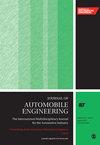结合时空关系与混合时间步场景交互的车辆轨迹预测方法
IF 1.5
4区 工程技术
Q3 ENGINEERING, MECHANICAL
Proceedings of the Institution of Mechanical Engineers Part D-Journal of Automobile Engineering
Pub Date : 2024-09-17
DOI:10.1177/09544070241277412
引用次数: 0
摘要
在车辆轨迹预测中,构建交通环境中车辆之间的交互关系是一项重大挑战。现有模型主要关注车辆历史记录中的时间相关性和相邻车辆之间的空间相关性,忽略了车辆历史状态对当前时间步的持续影响以及多个序列随时间变化的相互作用。为了解决这些局限性,我们提出了一种多模态车辆轨迹预测方法,将混合时步场景交互(HTSI)整合到时空关系中。首先,我们介绍了由多步时空信息聚合(MTIA)和单步时空信息聚合(STIA)方法组成的 HTSI 模块。MTIA 利用多头关注机制来捕捉连续帧之间的时间依赖关系,从而生成新的时间序列,将历史时间状态对当前时间戳的持续影响合并在一起。同时,STIA 采用多头关注机制来捕捉多个时间序列的空间维度权重,并通过聚合每个时间戳的空间交互特征,生成融合了空间交互影响的新时间序列。随后,通过 LSTM 层进行特征提取。此外,我们还提出了一种改进的 DIPM 池模块,通过有选择地重复使用历史隐藏状态来提高模型的长期预测能力。最终,根据 HighD 和 NGSIM 数据集的训练结果,与其他最先进的轨迹预测模型相比,我们的模型在长期预测方面具有显著优势。具体来说,在 5 秒的预测窗口内,该模型在 NGSIM 数据集上的均方根误差(RMSE)为 2.79 米,比基准模型的平均准确率提高了 33.62%。此外,在 HighD 数据集上,模型的均方根误差为 2.16 米,提高了 33.43%。关键代码可从以下链接获取:https://github.com/gyhhq/Prediction-trajectory 。本文章由计算机程序翻译,如有差异,请以英文原文为准。
Vehicle trajectory prediction method integrating spatiotemporal relationships with hybrid time-step scene interaction
In vehicle trajectory prediction, constructing the interactive relationships among vehicles within the traffic environment poses a significant challenge. Existing models predominantly focus on temporal dependencies within vehicle histories and spatial correlations among neighboring vehicles, overlooking the continuous influence of historical vehicle states on the current time step and the interplay of multiple sequences over time. To address these limitations, we propose a method for multimodal vehicle trajectory prediction that integrates Hybrid Time-step Scene Interaction (HTSI) into the spatiotemporal relationships. Firstly, we introduce the HTSI module, comprising Multi-step Temporal Information Aggregation (MTIA) and Single-step Temporal Information Aggregation (STIA) methods. MTIA utilizes multi-head attention mechanisms to capture temporal dependencies between consecutive frames, thereby generating new time series amalgamating the ongoing influence of historical time states on the current timestamp. Simultaneously, STIA employs multi-head attention mechanisms to capture the spatial dimension weights of multiple time series and, by aggregating spatial interaction features at each timestamp, generates new time series fused with spatial interaction influences. Subsequently, feature extraction is performed through LSTM layers. Moreover, we propose an improved DIPM pooling module, improving the model’s long-term prediction capability by selectively reusing historical hidden states. Ultimately, based on training results from the HighD and NGSIM datasets, our model demonstrates significant advantages in long-term prediction compared to other state-of-the-art trajectory prediction models. Specifically, within the 5 s prediction window, the model achieved a root mean square error (RMSE) of 2.79 m on the NGSIM dataset, representing a 33.62% improvement over the baseline model’s average accuracy. Additionally, on the HighD dataset, the model attained an RMSE of 2.16 m, reflecting a 33.43% enhancement. The crucial code can be obtained from the provided link: https://github.com/gyhhq/Prediction-trajectory .
求助全文
通过发布文献求助,成功后即可免费获取论文全文。
去求助
来源期刊

CiteScore
4.40
自引率
17.60%
发文量
263
审稿时长
3.5 months
期刊介绍:
The Journal of Automobile Engineering is an established, high quality multi-disciplinary journal which publishes the very best peer-reviewed science and engineering in the field.
 求助内容:
求助内容: 应助结果提醒方式:
应助结果提醒方式:


